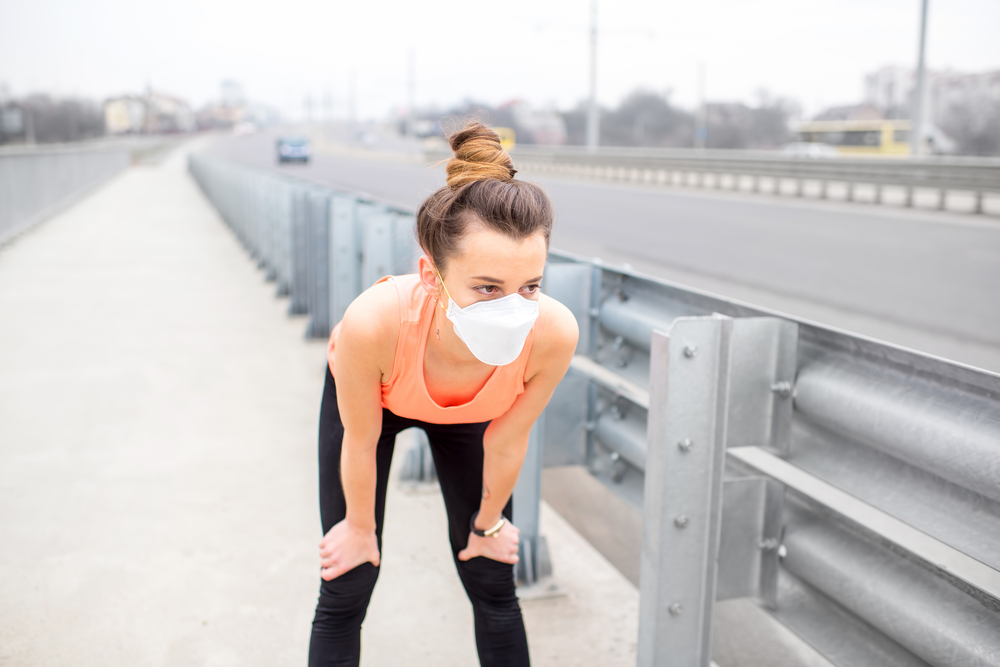Below we share tips to help you workout safely when the AQI is high.
Air pollution refers to the presence of harmful substances or particles in the air, usually from human activities such as industrial emissions, vehicle exhaust, and burning of fossil fuels. These pollutants can include chemicals, gases, smoke, and particulate matter.
Working out outdoors in an area with high levels of air pollution can indeed have negative effects on health. When exercising, we breathe in more air and take in a greater amount of pollutants compared to when we are at rest.
This can lead to various health issues, such as irritation of the respiratory system, increased risk of respiratory infections, worsening of asthma symptoms, decreased lung function, and an increased risk of developing chronic respiratory conditions.
Additionally, air pollution can also affect cardiovascular health, as pollutants can enter the bloodstream through the lungs and cause inflammation, oxidative stress, and damage to blood vessels. This may lead to an increased risk of heart attacks, strokes, and other cardiovascular diseases. Read on as we share tips to help you workout safely when the AQI is high.
10 Workout tips to follow if there’s high air pollution:
1. Check the air quality index (AQI) regularly
Keep track of daily AQI levels in your area using reliable apps or websites. Avoid outdoor workouts on days when the pollution levels are high.
2. Modify your workout routine
Consider changing the timing of your workouts. Early mornings or late evenings usually have lower pollution levels compared to midday. Adjust your schedule accordingly.
3. Choose indoor workouts
Opt for indoor exercises like yoga, Pilates, or weightlifting instead of outdoor activities. This helps in minimising exposure to pollutants.
4. Invest in a good quality air purifier
If you prefer exercising at home, use an air purifier to filter out harmful particles and maintain good indoor air quality.
5. Wear appropriate gear
If outdoor activities are unavoidable, wear a mask designed to filter out pollutants. Additionally, dress in breathable and lightweight clothing to reduce exposure.
6. Find alternative locations
Look for areas with good air quality, like parks or green spaces close to water bodies. These areas tend to have better air circulation and lower pollution levels.
7. Stay hydrated
Drinking plenty of water helps your body flush out toxins more efficiently, minimising the impact of pollutants on your health.
8. Listen to your body
If you experience symptoms like coughing, wheezing, or shortness of breath during exercise, stop immediately and seek medical assistance if needed. Your body is indicating that the pollution levels are affecting you.
9. Incorporate indoor air-cleansing plants
Plants such as peace lilies, spider plants, and rubber plants can help improve indoor air quality by oxidising pollutants.
10. Participate in low-intensity workouts
Opt for less strenuous exercises during periods of poor air quality. Walking, gentle stretching, or light aerobic exercises can still provide health benefits without overexposing yourself to pollutants.
It is generally recommended to avoid exercising in areas with high levels of air pollution, especially on days when pollution levels are particularly high. If exercising outdoors is unavoidable, choosing times when pollution levels are lower, such as during early morning or late evening, can help to reduce exposure. Wearing a mask designed to filter out pollutants can also provide some protection. Indoor exercise options, such as a gym or home workout, may be a safer alternative when outdoor air quality is poor.






